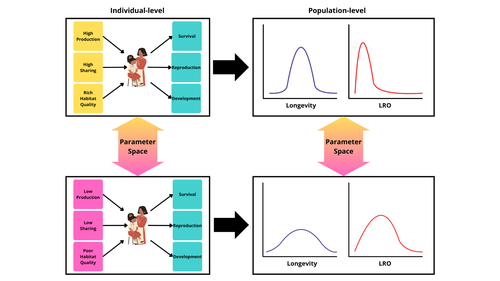
TENNIE Claudio
- Tools and Culture among Early Hominins, WG of Early Prehistory and Quaternary Ecology, University of Tübingen, Tübingen, Germany
- Life Sciences
- recommender
Recommendation: 1
Reviews: 0
Areas of expertise
2017 - current
Permanent research group Leader: "Tools and Culture among Early Hominins", Department for Early Prehistory and Quaternary Ecology, University of Tübingen, Germany
2013 - current
Adjunct Scientist, Lester E. Fisher Center for the Study and Conservation of Apes, Lincoln Park Zoo, Chicago, USA
2012 - 2017
Research-focused Lecturer (Birmingham Fellow), University of Birmingham, UK
School of Psychology.
Also became Associate of the Higher Education Academy (HEA) during that time.
2009 - 2012
Max Planck Institute for Evolutionary Anthropology, Leipzig, Germany
Postdoctoral research fellow
2006 - 2012
Carried out studies with chimpanzees in Ngamba Island Chimpanzee Sanctuary, Uganda (4 trips, totalling 8 months) – plus field project in western Uganda in 2006
2004 - 2009
Max Planck Institute for Evolutionary Anthropology, Leipzig, Germany
Ph.D.-student and zoo-labcoordinator at the Wolfgang Köhler Primate Research Centre
Ph.D. in Biology - Göttingen University, Germany - 20.11.2009, titled:
"Human culture versus great ape traditions: Mechanisms of observational learning in human children and great apes"
Supervised by Prof. Michael Tomasello and Dr. Josep Call; examined by Prof. Julia Fischer and Prof. Michael Waldmann.
2003 - 2004
Max Planck Institute for Evolutionary Anthropology, Leipzig, Germany
Research Assistant
2002 - 2003
University of Bielefeld, Bielefeld, Germany
Diploma thesis on observational learning in all genera of great apes
(studies performed at the Wolfgang Köhler Primate Research Centre in Leipzig, Germany)
Recommendation: 1
30 May 2024

STAGE 1

The role of resource dynamics in the distribution of life cycles within a female human population
An agent-based model of the role of resource dynamics and the environment in human female life cycles
Recommended by Claudio Tennie based on reviews by Cecilia Padilla-Iglesias and 1 anonymous reviewerAmong primates, the human female life cycle appears special. Aspects of these life cycles have been linked to the acquisition and distribution of resources and to environmental factors, as well as to individual differences across human females. Many questions remain regarding the causal roles that these (or also other) factors might have played in the evolution of human female life cycles – and also whether generalizing statements about these life cycles can adequately capture the wide range of the observed phenomena.
In the current study, Varas Enriquez et al. (2024) outline a plan for an agent-based model approach to study the factors that guide and channel variability in female life cycles in humans (within biological constraints), via the effects that their model will capture. The authors’ model has a particular eye towards the effects of resource dynamics (resource production and resource transfers) and environmental conditions – and their interplay. The results of this agent based model will be thoroughly analysed to better understand the evolution of the specific female human life cycle range.
The study plan was refined after one round of review, which led to input from two external reviewers and the recommender. The revised (second) version was judged to satisfy the Stage 1 criteria for in-principle acceptance.
URL to the preregistered Stage 1 protocol: https://osf.io/24c7z
Level of bias control achieved: Level 2. At least some data/evidence that will be used to answer the research question has been accessed and partially observed by the authors, but the authors certify that they have not yet observed the key variables within the data that will be used to answer the research question AND they have taken additional steps to maximise bias control and rigour (e.g. conservative statistical threshold; recruitment of a blinded analyst; robustness testing, multiverse/specification analysis, or other approach)
List of eligible PCI RR-friendly journals:
Level of bias control achieved: Level 2. At least some data/evidence that will be used to answer the research question has been accessed and partially observed by the authors, but the authors certify that they have not yet observed the key variables within the data that will be used to answer the research question AND they have taken additional steps to maximise bias control and rigour (e.g. conservative statistical threshold; recruitment of a blinded analyst; robustness testing, multiverse/specification analysis, or other approach)
List of eligible PCI RR-friendly journals:
References
Varas Enríquez, P. J., Lukas, D., Colleran, H, Mulder, M. B., & Redhead, D. (2024) The role of resource dynamics in the distribution of life cycles within a female human population. In principle acceptance of Version 2 by Peer Community in Registered Reports. https://osf.io/24c7z